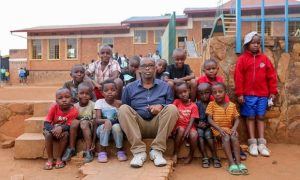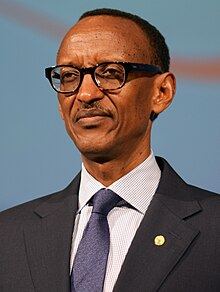Life Presidency
OpenLife Nigeria reports that despite the growing outcry about the tendencies to permanently hold on to power by some leaders, Rwanda’s president, Paul Kagame, has declared he will run for a fourth term next year.
He says that “what the West thinks is not my problem,” after the United States and others criticized the earlier lifting of term limits to extend his rule.
President Paul Kagame made the announcement in an interview with the French-language publication Jeune Afrique published Tuesday.
The 65-year-old Kagame has been president since 2000 and was declared the winner of the previous election in 2017 with more than 98% of the vote. He has been the de facto leader since Rwanda’s 1994 genocide.
Next year’s election will be the first in which people born during Kagame’s presidency and knowing no other leader will be old enough to vote.
Born to a Tutsi family in southern Rwanda on October 23, 1957, Paul Kagame is a Rwandan politician and former military officer who is the fourth and current president of Rwanda since 2000.
He was the youngest of six children, in Tambwe, Ruanda-Urundi, a village located in what is now the Southern Province of Rwanda.
His father, Deogratias Rutagambwa, was a member of the Tutsi ethnic group, from which the royal family had been derived since the 18th century or earlier.
A member of the Bega clan, Deogratias Rutagambwa had family ties to King Mutara III, but he pursued an independent business career rather than maintain a close connection to the royal court.
Kagame’s mother, Asteria Bisinda, descended from the family of the last Rwandan queen, Rosalie Gicanda, that is from the Hebera branch of the royal Nyiginya clan.
Kagame began his primary education in a school near the refugee camp, where he and other Rwandan refugees learned how to speak English and began to integrate into Ugandan culture.
At the age of nine, he moved to the respected Rwengoro Primary School, around 16 kilometres (10 mi) away.
He subsequently attended Ntare School, one of the best schools in Uganda, which was also the alma mater of future Ugandan President Yoweri Museveni.
According to Kagame, the death of his father in the early-1970s, and the departure of Rwigyema to an unknown location, led to a decline in his academic performance and an increased tendency to fight those who belittled the Rwandan population.
He was eventually suspended from Ntare and completed his studies at Old Kampala Secondary School.
After completing his education, Kagame made two visits to Rwanda, in 1977 and 1978.
He was initially hosted by family members of his former classmates, but upon arrival in Kigali; he made contact with members of his own family.
He kept a low profile on these visits, believing that his status as a well-connected Tutsi exile could lead to arrest. On his second visit, he entered the country through Zaire rather than Uganda to avoid suspicion.
Kagame used his time in Rwanda to explore the country, familiarise himself with the political and social situation, and make connections that would prove useful to him in his later activities.
Paul Kagame previously served as a commander of the Rwandan Patriotic Front (RPF), a rebel armed force which invaded Rwanda in 1990.
The RPF was one of the parties of the conflict during the Rwandan Civil War and the armed force which ended the Rwandan genocide.
He was considered Rwanda’s de facto leader when he served as Vice President and Minister of Defence under President Pasteur Bizimungu from 1994 to 2000 after which the vice-presidential post was abolished.
The family fled to Uganda when he was two years old. He would spend the rest of his childhood there during the Rwandan Revolution, which ended centuries of Tutsi political dominance.
In the 1980s, Kagame fought in Yoweri Museveni’s rebel army, becoming a senior Ugandan army officer after many military victories led Museveni to the Ugandan presidency.
Kagame joined the RPF, taking control of the group when previous leader Fred Rwigyema died on the second day of the 1990 invasion. By 1993, the RPF controlled significant territory in Rwanda and a ceasefire was negotiated.
The assassination of Rwandan President Juvénal Habyarimana set off the genocide, in which Hutu extremists killed an estimated 500,000 to 800,000 Tutsi and moderate Hutu. Kagame resumed the civil war and ended the genocide with a military victory.
During his vice presidency, Kagame controlled the national army and was responsible for maintaining the government’s power, while other officials began rebuilding the country. Many RPF soldiers carried out retribution killings. Kagame said he did not support these killings but failed to stop them.
Hutu refugee camps formed in Zaire and other countries and the RPF attacked the camps in 1996, but insurgents continued to attack Rwanda. As part of the invasion, Kagame sponsored two rebel wars in Zaire.
Rwandan- and Ugandan-backed rebels won the first war (1996–97), installing Laurent-Désiré Kabila as president in place of dictator Mobutu and returning Zaire to its former pre-Mobutu name, the Democratic Republic of the Congo (DRC).
The second war was launched in 1998 against Kabila, and later his son Joseph, following the DRC government’s expulsion of Rwandan and Ugandan military forces from the country. The war escalated into a conflict that lasted until a 2003 peace deal and ceasefire.







